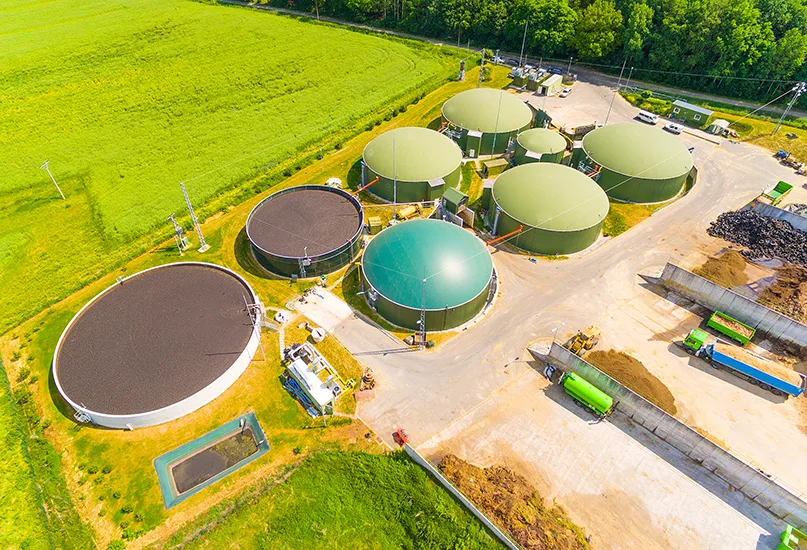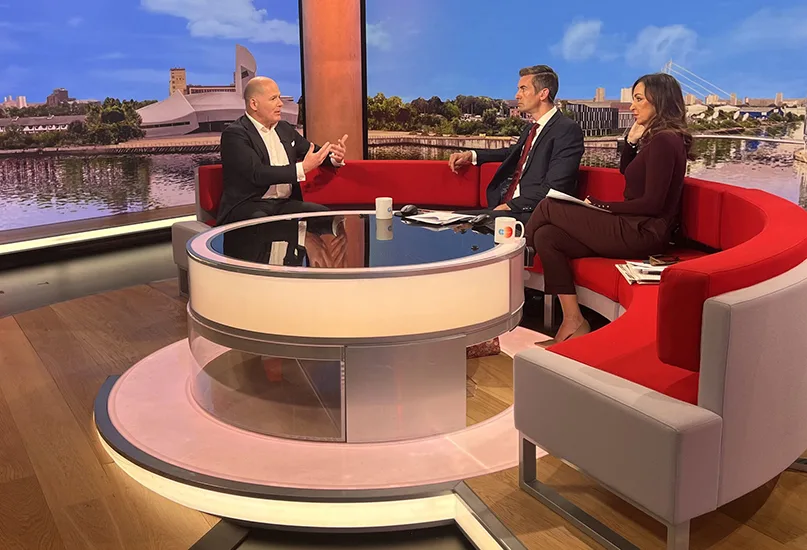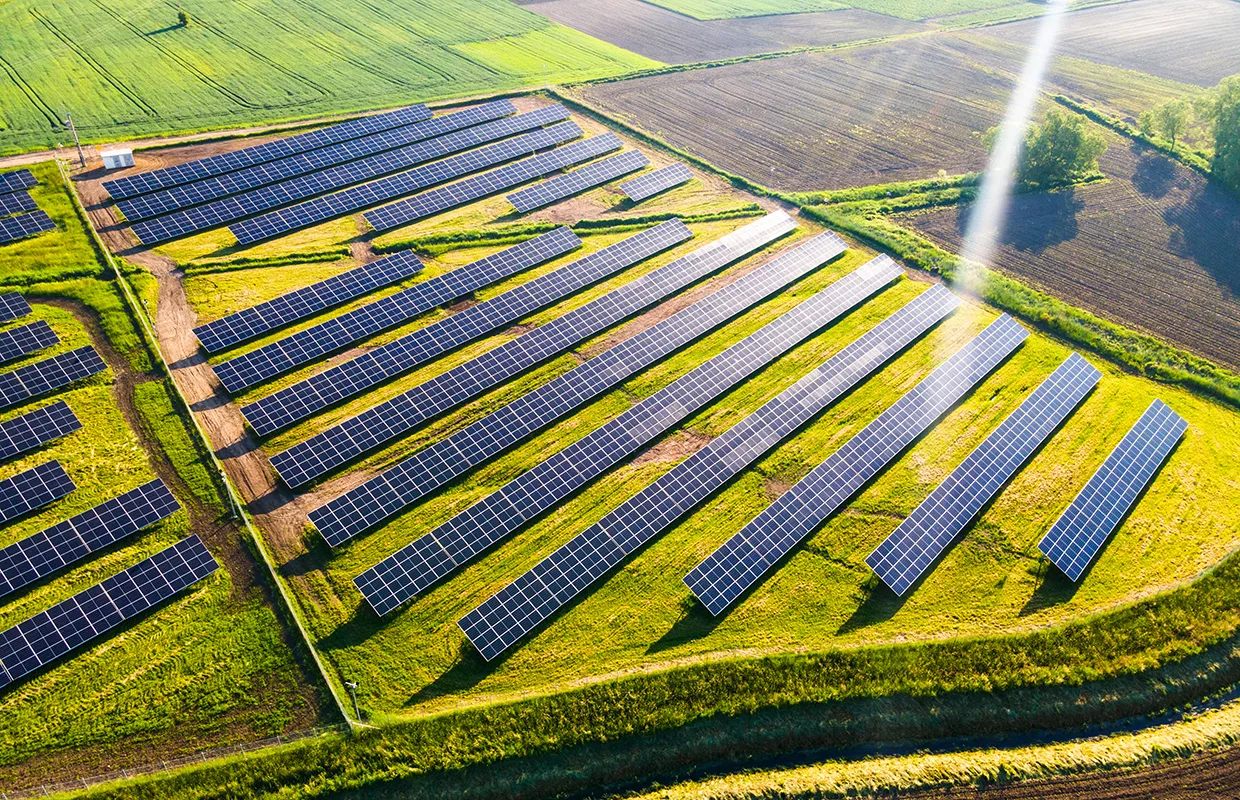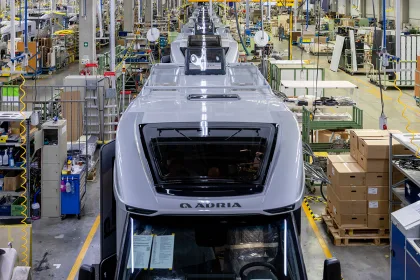Efficiently reducing its reliance on historically volatile international energy markets, the UK continuously champions the use of renewable resources as it ushers in a new era of clean energy independence.
SPOTLIGHT ON UK RENEWABLE ENERGY
The UK’s renewable energy sector has significantly developed in recent years, most pointedly due to a change in government leadership in July 2024 that caused a shift in environmental policy, driving a step change in the country’s energy transition.
On a mission to position the UK at the forefront of global clean energy generation, the government’s Department for Energy Security and Net Zero (DESNZ) has introduced numerous notable measures that aim to grow the nation’s renewable energy capacity and make it secure by 2030.
Such targets comprise the key milestones of the Clean Power 2030 Action Plan (CP2030) that is purpose-driven to overcome three core obstacles to the energy transition, namely: the need for a secure and affordable energy supply; the creation of essential new energy industries that will be supported by thousands of skilled workers; and the need to reduce greenhouse gas (GHG) emissions and limit the UK’s contributions to climate change.
Diligently working towards such targets, CP2030 plans to create an innovative clean energy system that will rapidly develop the country’s renewable energy capacity through next-generation technologies over the next five years.
In partnership with Ofgem, the government will also introduce a Long Duration Electricity Storage (LDES) cap and floor scheme, which will work to successfully deliver greater electricity interconnection by providing a minimum amount of revenue for LDES investors, facilitating greater funding for the asset whilst also providing support for its operators.
These strategies will create major positive impacts for the UK’s private sector and homeowners, who are continuously transitioning towards renewable energy sources as they become more affordable and readily accessible, which will, in turn, reduce the nationwide dependence on fossil fuels.
On top of this, the progression of renewable energies and drive for clean power will unlock thousands of jobs across the country and boost energy security, paving the way for a new age of UK renewable power.

Q&A WITH THE RENEWABLE ENERGY ASSOCIATION (REA)
As the UK’s largest renewable energy trade body, the Renewable Energy Association (REA) continues to be a driving force in the country’s clean energy transition. We return to the association and learn more about its role as advocate for a progressively environmental regulatory landscape with CEO, Trevor Hutchings.
Firstly, how would you say the UK renewable energy sector has evolved since we last spoke to the Renewable Energy Association (REA) in 2023?
Trevor Hutchings, CEO (TH): The renewable energy sector continues to grow apace. Around 50 percent of our electricity now comes from these technologies whose cost continues to fall, with renewable energy sources now being the cheapest form of new power generation.
The overall economics of moving to clean energy are compelling, with the drive to net zero being the financial opportunity of the 21st century. Indeed, the net zero economy has grown 10.1 percent since 2023, outstripping growth in other sectors.
We have a new UK government that has made net zero and clean power a central mission, which has further boosted confidence in the sector and is starting to unblock some of the barriers to greater deployment such as planning reform and grid connection.
Public support for renewable energy also remains high, with 82 percent of people supporting renewables according to the government’s latest public attitudes tracker.
At the same time, however, we are experiencing political headwinds. Opposition parties have broken the political consensus on net zero that has existed since the Climate Change Act of 2008.
This is worrying, as much of the debate is ideological rather than evidence-based, so it is essential that we continue to demonstrate the benefits of renewables and maintain momentum.
How has the REA progressed in its role as an advocate and key driver of the transition from a fossil fuel driven society to a renewable one?
TH: The REA continues to advocate for the clean energy transition – ramping up renewable technologies and weaning ourselves off fossil fuels in an orderly manner.
Whilst we will still use oil and gas for decades to come, we must significantly reduce our dependence, and there are good reasons to do so.
For example, the recent energy crisis was rooted in the UK’s dependence on international gas markets which were upended by the conflict in Ukraine. In contrast, home-grown renewable energy sources would protect UK bill payers from such disruption in an increasingly unstable world.
A renewable energy system is characterised by distributed energy, local bioenergy, solar and wind farms, and a mixture of other generating assets. This diversity reduces the risk of a single point of failure, thereby increasing national security.
Now, more than ever, the REA needs to be a strong voice for the sector to help the government not only get the job done but be prepared to hold their feet to the fire if they fall short.
We are the largest renewable energy trade body in the UK with around 500 member organisations operating across the renewables value chain, having been a prominent voice in the sector for 25 years. But we must not rest on our laurels in the face of a rapidly changing landscape and the shifting needs and expectations of our members.
Accordingly, we are strengthening our approach through our new strategic plan focused on impact and growth, ensuring we have the competencies in place to shift the dial on this agenda.

Can you update us on the progress of solar and wind power deployment across the UK over the last year?
TH: The deployment of these energies continues to grow significantly. On 6th April 2025, Great Britain set a record for solar power generation, reaching 13.2 gigawatts (GW), whilst the record for wind was set on 18th December 2024 at 22.5GW.
Annual generation from solar has increased from around 2,000-gigawatt hours (GWh) in 2013 to nearly 14,000 GWh in 2023. For wind, it increased from 29,000 GWh to over 80,000 GWh over the same period.
This is impressive growth, but we need to achieve a step change in deployment levels over the next few years if we are to decarbonise our electricity supply and realise the full benefits of renewable energy.
In your opinion, how will the CP2030 Action Plan address the challenges of the renewable energy sector?
TH: Ensuring our electricity comes from clean sources and is electrifying more of the economy is essential for achieving net zero. So, CP2030 is very welcome as it helps to focus government and industry action.
It is also important for instilling market confidence, lowering the cost of capital, and attracting inward investment. Whilst extremely challenging, it is a feasible target and even a near miss would represent a huge achievement.
I have confidence that over 50 percent of our electricity today is from clean sources. The lights haven’t gone out, and we haven’t bankrupted the country, in fact, it is quite the opposite – despite what the critics say.
Nevertheless, the government will need to utilise all levers of state in order to get the job done. Many of these levers sit outside DESNZ and therefore CP2030 needs to be a driving force across all government departments and beyond.
We know from experience that this is difficult to achieve, so the Prime Minister must be prepared to ‘bang heads together’ if this does not happen.
How is the REA helping to implement CP2030’s strategies towards the rapid deployment of clean energy?
TH: The REA works with its members to advocate for a progressive policy and regulatory landscape to support the deployment of clean energy.
Having the right policies in place, enabling effective regulation, and unblocking barriers are key to scaling renewable energy, especially in some essential but less mature technology areas like LDES. In this case, the REA has long advocated for its route to market, recognising LDES’s high upfront investment costs and long lead times.
Notably, the REA is working with its members and Ofgem on the detailed design of the government’s recently announced cap and floor scheme to encourage investment. Therefore, LDES is just one example of the value we bring to our members and other stakeholders.
The REA is uniquely positioned as the only renewable energy trade body operating across the full breadth of the value chain, covering all the major clean technologies across power, heat, transport, and circular bioresources. Through our policy and technology forums, we forge policy positions, undertake research, and run campaigns to effect change.
Through our subsidiary, Renewable Energy Assurance Limited (REAL), we operate several assurance schemes, enabling the market to operate more effectively. These include the Green Gas Certification Scheme (GGCS), supporting the market in green gas, and the Renewable Energy Consumer Code (RECC), supporting the roll out of heat pumps and solar panels.
“The REA is uniquely positioned as the only renewable energy trade body operating across the full breadth of the value chain, covering all the major clean technologies across power, heat, transport, and circular bioresources”
Trevor Hutchings, CEO, Renewable Energy Association (REA)

Going forwards, how is the REA continuing to identify green jobs and help people harness the advantages of renewable energy?
TH: In 2024 there were 273,000 full-time jobs across the UK in the net zero economy. This figure rose to 951,000 when factoring in the wider supply chain, generating £83.1 billion in economic activity. Net zero jobs are 40 percent more productive than the national average, with wages 15 percent higher than the UK norm.
Many of these vacancies are evenly distributed across the country and often require re-skilling and upskilling of established professions like plumbers, electricians, and builders, rather than entirely new disciplines.
Net zero is also placing higher demand on established trades like welders as well as professional services including legal, finance, and insurance. The REA will continue to champion the need for additional skills provision as a critical enabler for clean energy.
One of the biggest advantages of renewable electricity is that it is cheaper than fossil fuels. Key technologies such as solar panels, wind turbines, and batteries have seen their costs plummet – solar panels are over 90 percent cheaper than they were just a couple of decades ago, harnessing a free resource – the sun.
However, lower renewable electricity costs – the ‘net zero dividend’ – are not fully reflected in the price homeowners and businesses pay for their electricity.
This is because gas still sets the price for over 90 percent of renewable electricity due to the way the energy market is structured, leading gas to dominate our system.
Gas prices are set by international markets and, as we know from the energy crisis, have fluctuated dramatically following the conflict in Ukraine.
Energy pricing is complicated, but the quickest way to yield the net zero dividend is to increase the penetration of renewables on the system, which is exactly the focus of the REA.
Looking ahead, how do you see the UK renewable energy sector developing over the next five years?
TH: Through CP2030, we are going to see significant growth in wind, solar, and storage, as well as improvements in the electricity grid. In parallel, we will see greater electrification of the economy, moving from petrol and diesel cars to electric vehicles (EVs), for example, and from gas boilers to heat pumps.
Regarding parts of the economy which are difficult to electrify – namely aviation, shipping, heavy goods, and some industrial processes – we will see an expansion of other forms of renewable energy like hydrogen and green gases such as biomethane.
Biomass for electricity generation and the provision of high-grade heating will also make up the energy mix, as will the UK’s interconnectors with other countries.
Ensuring supply and demand are always balanced requires active management across the electricity grid – something which artificial intelligence (AI) will increasingly assist with.
We will also see greater innovation in flexible technologies like energy storage and, on the demand side, greater involvement from consumers and businesses through tariff usage alongside other demand measures rewarded through cheaper electricity.
This is the decentralised energy system of the future, which is more resilient, insulated from international gas markets, and with fewer single points of failure.

With this in mind, what are the REA’s future priorities in order to continue advocating for the interests of its members and communicating the needs of the renewable energy sector to the government?
TH: We will continue to represent our members’ interests as we pursue our vision of a net zero future built on renewable energy and clean technologies. Our priority is to drive our corporate strategy for impact and growth, which will, in turn, ensure we remain at the top table of government decision-making.
The REA will become more visible in its work, ensuring it is member-focused and delivering value. We will also partner with other organisations to leverage our impact and guarantee we attract, retain, and develop the best people.
On policy and advocacy, we will double down on enabling renewables deployment at scale, building on the progress we have already made towards a clean energy system.
As we need a diverse range of technologies in the energy mix, we will continue to champion and showcase emerging technology areas which perhaps hitherto have been undervalued, such as biomethane.
This is an important time for the sector, and I am determined that, under my leadership, the REA will continue to play an influential role in the journey to net zero.
RENEWABLE ENERGY ASSOCIATION PARTNERS




































